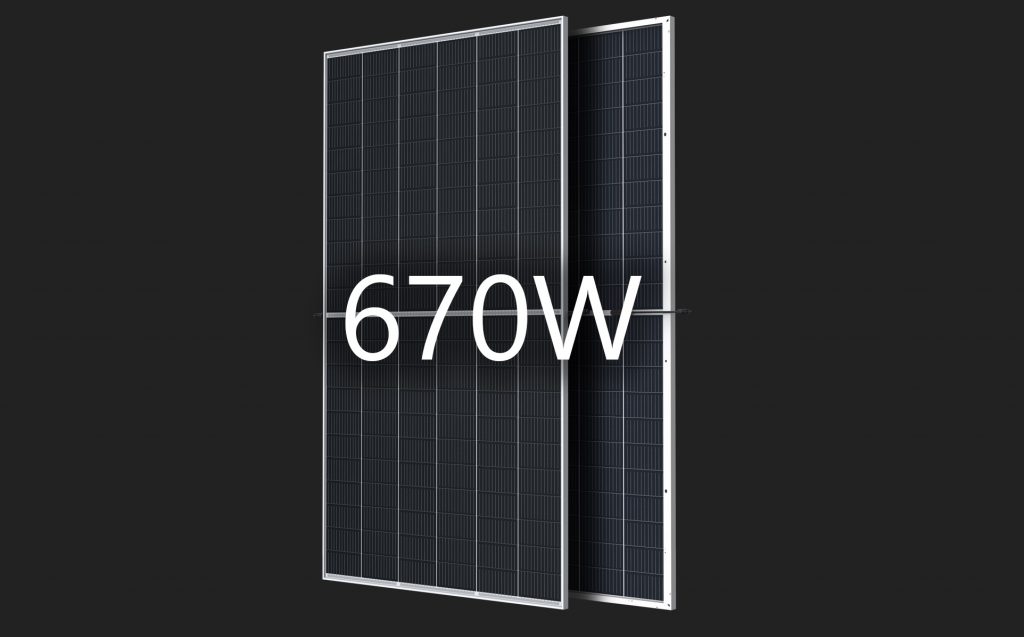
When we got solar on our house in February last year, we chose 20x 325W solar panels to create our 6.5kW system. By comparison, Trina Solar has a new solar panel that is a massive 670W per panel. With a higher capacity, you can achieve the same energy collection with fewer panels and a smaller footprint, or alternatively achieve a much larger system in the same physical space as less efficient panels.
Before going onto homes and businesses, new solar panels go through a series of tests to ensure they withstand the harsh elements they are likely to be exposed to, throughout their life.
Results from six recent tests show that Trina Solar Vertex 670W modules have excellent mechanical load reliability. The six tests included static mechanical load testing, non-uniform snow-load testing, extreme low-temperature mechanical load testing, hail testing, extreme dynamic mechanical load (DML) testing and extreme wind tunnel testing.
The series of tests verified, across-the-board, the excellent mechanical load reliability of 670W Vertex modules.
Outdoor photovoltaic modules can be affected by multiple environmental factors. Extreme weather such as snowstorms and gale-force or higher winds necessitates a higher load performance. As a result, the modules’ design needs to withstand extreme weather over the product’s lifecycle.
In May of this year, PV Evolution Labs (PVEL), one of the leading independent PV test laboratories, released its seventh annual global PV module test results, called the 2021 PV Module Reliability Scorecard Report. Trina Solar was a ‘top performer’ for outstanding product reliability and performance among global PV module manufacturers.
Dr Zhang Yingbin, head of product strategy and marketing at Trina Solar, says completing the general reliability verification covered all the basics, while the advanced testing verified that the ultra-high-power modules can maintain outstanding performance even when subject to extreme weather.
Among the lineup of tests, the non-uniform snow-load test simulated uneven pressures caused by a large accumulation of heavy snow on the Trina Solar’s 670W module surface. The highest pressure was applied to the bottom end of the module of up to 7000Pa (equivalent to a depth of 2.8 meters of snow), with the results showing that the power attenuation of the module is only 0.56%.
The extreme low-temperature mechanical load test, a static load testing of positive 5400Pa/ negative 2400Pa under an extremely low – 40°C, showed no variation in electroluminescence (EL) and power attenuation of only 0.11%.
In the hail test, which simulates the impact of hail of different sizes on modules, the 210 Vertex 670W module passed the test measuring the impact of hailstones 35 mm in diameter without causing any damage.
In multiple extreme dynamic mechanical load testing, 210 Vertex 670W modules delivered better performance than competitors’ modules with load capacity several times higher than the IEC standard. When installed by clamps, the 210 Vertex 670W double-glass module passed the 20,000 cycles, 20-fold extreme testing, still remaining intact.
In the extreme wind tunnel test, the 210 Vertex 670W module remains intact when the wind speed reached 62m/s (216km/h or 134 mph), passing the extreme wind speed test equivalent to the low end of a Category 4 hurricane on the Saffir-Simpson scale.
Maintaining the consistent ultra-high reliability of Trina Solar modules, the 210 Vertex series modules integrates a series of design optimizations, including added frame wall thickness, larger cavities, optimized material selection and matching designs, to ensure ultra-high structural robustness. The tests showed the Vertex product series’ excellent ability to withstand external mechanical stress including extreme wind, snowstorms, extreme cold, hail and other extreme weather.
“The reason we chose to do these tests of the 670W Vertex modules is not only to empower customers to understand the high reliability of 670W+ modules, but also to share research results across the whole of the industry for continuous innovation and comprehensive application of 600W+ modules,” says Zhang.
Product strategy and marketing at Trina Solar

Dobling the efficiency, that’s pretty amazing – so many more 6.6/5 systems can be built that way when even the space compromised can sign up. And if not, 13.2 / 10 systems will be next, absolutely perfect for EVs and batteries.
Have a 20×330 ourselves, love it.
these are a 2.3×1.3m panel Jorgen,standrd are 1.7x 1.0m